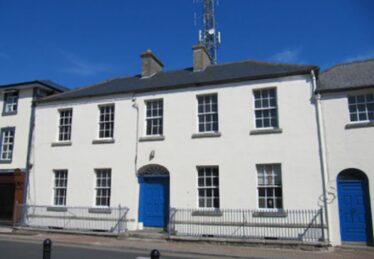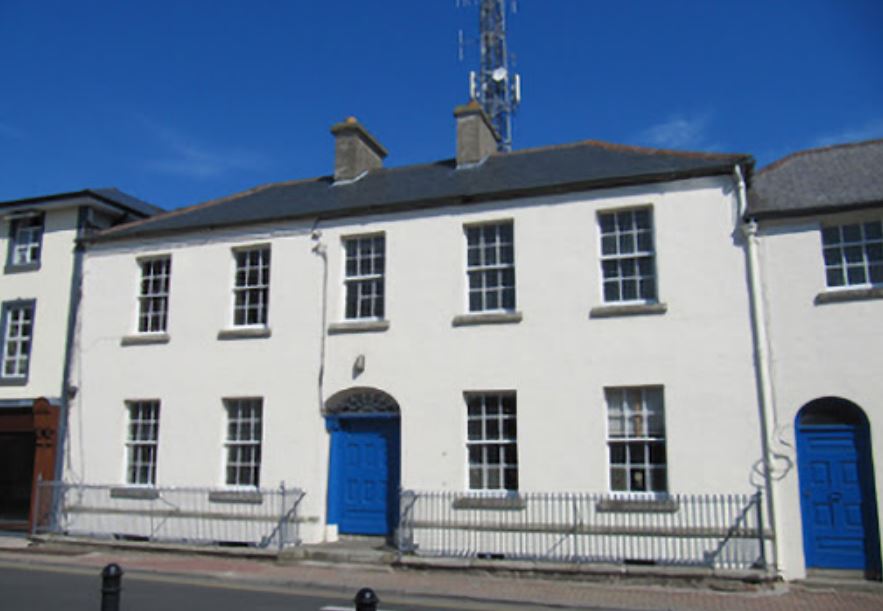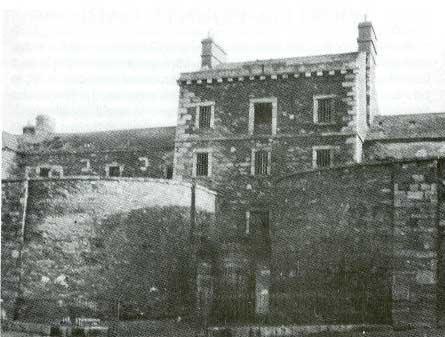Wicklow Gaol: Political Strife and Conflict |Part one| by Stan O'Reilly


They were radicals and rebels, seditious and treasonous individuals, standing in arms against the Crown forces of occupation in Ireland. Throughout the various rebellions and uprisings over hundreds of years they had met force with counter-force, be it in 1641, 1848, 1867, and in the War of Independence.
Loyal patriots
They were considered by their own as loyal patriots willing to give their lives for the four green fields and for Ireland as woman, free to decide her own destiny. Some were freedom fighters who felt drawn to do their bit while others were extremists willing to do or die to drive English authority out of Ireland. There are some parallels which can be drawn between the various rebellions and uprisings which took place before the War of Independence and none more so that with those individuals who were ran to ground, hunted down and placed in the cells of Wicklow Gaol.
National figures and locals alike
Some of these individuals were national figures such as the 1798 United Irishmen leader Napper Tandy and War of Independence figure Erskine Childers. Others had a more localised fame, men such as William ‘Billy’ Byrne of 1798 fame and William O’ Grady the President of Wicklow Sinn Fein and IRA gunman, whose combat experiences were never recorded or spoken about, except in general terms. But the fact remains that he was a noted Wicklow figure of the time and spent time in the cells of Wicklow Gaol with comrades.
1920s
The Black and Tans were at Free Quarters in this writer’s grandparents’ shop and house in the Market Square. This meant that they could effectively stay on the premises, eat, drink and smoke whatever goods were in the house, use the furnishings as they saw fit and not pay a penny on leaving. My grandparents were also forced to make tea for them and deliver it to them in Wicklow Gaol.
Folk memory
A piece of folk memory from the time was related to me by my father. It concerned the sentry on night duty who heard footsteps coming towards him. He peered into the darkness and saw nothing. He then threw out three challenges to halt and fired his weapon. By the light of dawn a dead donkey could be seen lying on the road at Kilmantin Hill.
When workmen were digging the foundations for the new Garda Barracks at Bachelor’s Walk in the 1980s, they found a hidden cache of arms from the War of Independence era. They were brought to J. T. O’ Byrne, a much respected local figure. He instructed them to return them to where they had uncovered them and it is said they lie there to this day. Those arms were pikes. Old style rebellion weapons still produced for the latest conflict. Some years back I was given a collection of books which had been saved from a house up on Marlton Road and were in storage for many years after. A small sheet of paper was inserted in one book. Originally white and now faded:
……………meeting at 11, bring a gun………………
The note dated from the War of Independence/Civil War period and such notes were both carried by male and female revolutionaries and sympathisers. They were stuck in books or other objects, including freshly baked bread. Whatever got the job done and in concealment was utilised.
Wicklow Barracks
Wicklow Barracks on Church Street, Headquarters of the Royal Irish Constabulary was attacked on several occasions in this period with the first incident taking place in 1920 after defences had been put in place there and troops mounted patrols around town. This was a bomb attack, many windows were shattered by the blast and damage caused to a concrete window sill, it is visible to this day as are the bullet holes in the Coastguard station on Dunbur and on the Billy Byrne statue. Another shocking incident took place in 1920 with the shooting dead of R. I. C. Constable John Fitzgerald on the Murrough, Wicklow. The fatally wounded policeman died later in the Barracks. He was accorded a military style funeral with the band of the Cheshire Regiment playing the Death March. The men who carried out the attack were said to have been a unit from outside of Wicklow Town who carried out the attack on bicycles. It is said that this unit had been castigated for their inaction and that this may have been the motive for the attack.

Former R.I.C. Barracks, Church Street, Wicklow Town (Photo: https://www.buildingsofireland.ie/buildings-search/building/16003122/church-street-wicklow-county-wicklow)
Wicklow Gaol
Another folk tale from the period concerned the man who was walking past Wicklow Gaol, he had one hand in his pocket at the time. Walking around with your hands in your pockets was prohibited then, due to the possibility of a gun being concealed in a pocket. The Gaol sentry threw out three challenges and was ignored. The sentry then discharged the weapon and the man was found to be wounded, he was also deaf. This tale turns up elsewhere in the country too.

Wicklow Gaol pre 1950 (Photo: Edward Kane)
Prisoner’s duty
July 1921: The first duty of any political prisoner or soldier who ended up in a gaol, camp or stockade, was to try to devise an effective means of escape from his confines. In Wicklow Gaol what was described in the local media as:
A sensational escape from Wicklow Gaol was effected on Saturday night, by it is understood, three soldiers of the Cheshire Regiment, who had been confined to ‘durance vile’ for some disciplinary discrepancies. They were located in a cell at almost the highest point of the lofty main building fronting Summerhill.
They dug through the wall close to the flue and like many a cartoon and movie scene which followed these thrilling times, used a rope fashioned from blankets and using a telephone pole, managed to lower themselves down to a lower roof and from there, down to ground level. It was then a matter of opening the front gate and escaping.
The three escapees however did not remain loose for long. Mass goers on Sunday morning were astonished to see the hole in the wall and the knotted blankets. A large scale search was carried out and the three were captured and escorted back to the confines of the Wicklow Gaol cells, Headquarters of the Cheshire Regiment. On the ground floor of the gaol to this day, you can still view a drawing of the Cheshire Regiment Coat of Arms in a cell on the left hand side close to the stairs, drawn by one of the enlisted soldiers quartered there.
Other escapes
Many prisoners before them had effected their escape either over the wall, as Hugh ‘Vesty’ Byrne did or by use of the front gate as a young man did in the late 19th century, having borrowed the Warden’s keys, to going through the tunnel under the gaol as Austin O’ Toole had done in the wake of the 1798 rebellion, he climbed over two decomposing bodies to exit the tunnel. He then stole a horse and rode north to freedom. The two skeletons were still there in the 1930s when workmen laying pipes across from Wicklow Gaol went into the tunnel. Others went through the back wall of the gaol during the Civil War.
Sources
Wicklow People Newspapers 1920-1924, various editions.
Wicklow Newsletter and Co. Advertiser Newspaper, 1920-24, Various editions.
Wicklow Historical Society Journal, Volume, 2. No. 2. 1996.
Wicklow Historical Society Journal , Volume 3. No. 5. 2006.
Wicklow Historical Society Journal , Volume 5. No. 3. 2016.
Courtesy of the Director of National Archives, Bishop Street, Dublin.
Courtesy of the Director of the National Library, Kildare Street, Dublin.
Courtesy of the Co. Librarian, Boghall Road, Bray, Co. Wicklow and his staff.




No Comments
Add a comment about this page